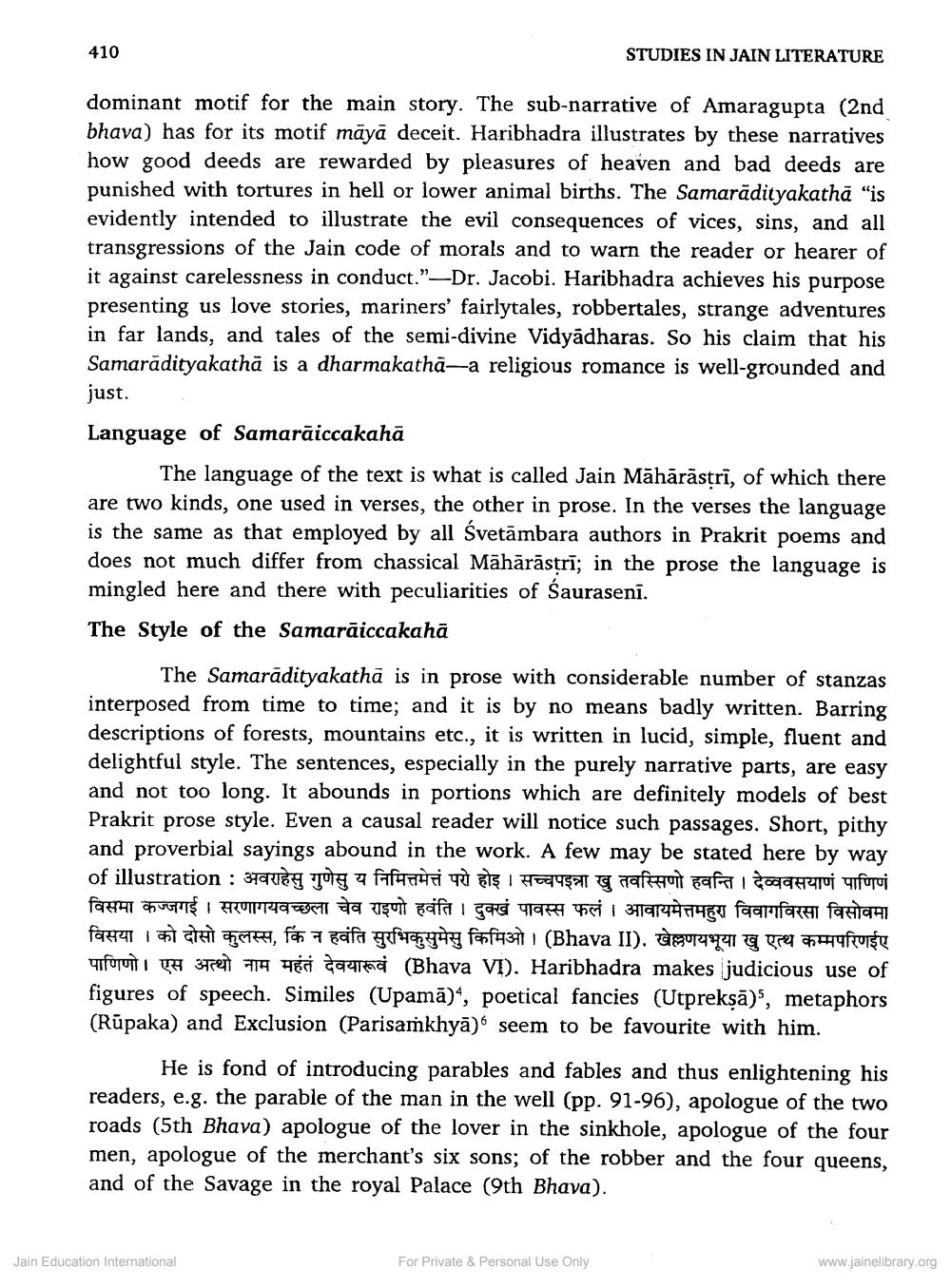________________ 410 STUDIES IN JAIN LITERATURE dominant motif for the main story. The sub-narrative of Amaragupta (2nd bhava) has for its motif maya deceit. Haribhadra illustrates by these narratives how good deeds are rewarded by pleasures of heaven and bad deeds are punished with tortures in hell or lower animal births. The Samaradityakatha "is evidently intended to illustrate the evil consequences of vices, sins, and all transgressions of the Jain code of morals and to warn the reader or hearer of it against carelessness in conduct."-Dr. Jacobi. Haribhadra achieves his purpose presenting us love stories, mariners' fairlytales, robbertales, strange adventures in far lands, and tales of the semi-divine Vidyadharas. So his claim that his Samaradityakatha is a dharmakatha-a religious romance is well-grounded and just. Language of Samaraiccakaha The language of the text is what is called Jain Maharastri, of which there are two kinds, one used in verses, the other in prose. In the verses the language is the same as that employed by all Svetambara authors in Prakrit poems and does not much differ from chassical Maharastri; in the prose the language is mingled here and there with peculiarities of Sauraseni. The Style of the Samaraiccakaha The Samaradityakatha is in prose with considerable number of stanzas interposed from time to time; and it is by no means badly written. Barring descriptions of forests, mountains etc., it is written in lucid, simple, fluent and delightful style. The sentences, especially in the purely narrative parts, are easy and not too long. It abounds in portions which are definitely models of best Prakrit prose style. Even a causal reader will notice such passages. Short, pithy and proverbial sayings abound in the work. A few may be stated here by way of illustration : अवराहेसु गुणेसु य निमित्तमेत्तं परो होइ / सच्चपइन्ना खु तवस्सिणो हवन्ति / देव्ववसयाणं पाणिणं विसमा कज्जगई / सरणागयवच्छला चेव राइणो हवंति / दुक्खं पावस्स फलं / आवायमेत्तमहुरा विवागविरसा विसोवमा farm in the other facts 7 gaifa gratia fa 377 (Bhava II). egurii (c) 27544FUTET TUTTI V Tren 7A TEC Tarhai (Bhava VI). Haribhadra makes judicious use of figures of speech. Similes (Upama), poetical fancies (Utpreksa)", metaphors (Rupaka) and Exclusion (Parisamkhya) seem to be favourite with him. He is fond of introducing parables and fables and thus enlightening his readers, e.g. the parable of the man in the well (pp. 91-96), apologue of the two roads (5th Bhava) apologue of the lover in the sinkhole, apologue of the four men, apologue of the merchant's six sons; of the robber and the four queens, and of the Savage in the royal Palace (9th Bhava). Jain Education International For Private & Personal Use Only www.jainelibrary.org




